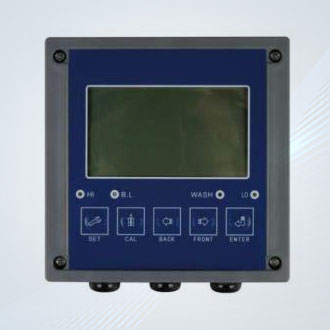Digital Transmitter: A Comprehensive Analysis of Working Principle, Core Functions and Application Scenarios
Release time:2025-10-26
Visits:570
A digital transmitter is a key industrial device that converts physical quantities (such as temperature, pressure, weight, current, etc.) into standard digital signals. It plays an important role in fields such as industrial automation, power monitoring, and environmental control, providing reliable data support for real - time monitoring and precise regulation. The following analysis is carried out from four major dimensions: core principle, functional characteristics, application scenarios, and selection key points.
I. Working Principle and Core Functions
The core of a digital transmitter operates based on the negative feedback principle and consists of three parts: a measurement unit, a signal amplifier, and a feedback system. Its working process is as follows: the measurement unit collects physical quantities and converts them into primary electrical signals → after being processed by the amplifier, standardized digital signals are output → the feedback system adjusts the signal accuracy in real - time to ensure stable output. Through this mechanism, it can convert non - standard signals (such as mV - level voltage) into 4 - 20mA current, 0 - 10V voltage, or digital protocol signals (such as RS485), which are convenient for control systems such as PLC and DCS to process.
1. Input overload protection: Prevents device damage caused by sensor signals exceeding the measurement range.
2. Anti - interference design: Eliminates interference such as environmental vibration and electromagnetic noise through digital filtering technology (such as HPDF high - performance filter).
3. Multiple protection mechanisms: Including output short - circuit protection, lightning and surge protection, and reverse power connection protection, suitable for high - temperature, humid, and corrosive environments.
II. Typical Application Scenarios
1. Power system monitoring
This type of application requires converting parameters such as three - phase current, voltage, and power into pulse or digital signals to support power quality analysis and energy consumption management. For example, a multi - electrical quantity transmitter can simultaneously output data such as active/reactive power, frequency, and power factor, helping to achieve grid load balance and fault early warning.
2. Industrial weighing and mechanical measurement
In scenarios such as logistics sorting and production line weighing, digital transmitters process the strain signals of weighing sensors to achieve high - precision dynamic weighing. The shock - proof design can effectively suppress vibration interference and quickly output stable values; some models also support dual measurement of static and dynamic forces, suitable for scenarios such as crane overload protection and torque monitoring.
3. Environmental parameter monitoring
In environments such as greenhouses and clean rooms, digital transmitters are used to detect parameters such as carbon dioxide concentration, temperature, and humidity. Their high - linear output and programmable configuration functions support remote data transmission and threshold alarm, ensuring the response speed and reliability of the environmental control system.
4. Process industry control
In industries such as petroleum and chemical engineering, digital transmitters integrate the collection and transmission of signals such as pressure, flow, and liquid level, and interact with the central control system through protocols such as Modbus to achieve closed - loop control of process parameters. Special anti - freezing and anti - corrosion models can withstand extreme temperatures and corrosive media, ensuring continuous operation under harsh working conditions.
III. Key Selection Indicators
1. Signal type matching: Select current - type (4 - 20mA, strong anti - interference) or voltage - type (0 - 10V, suitable for parallel connection of multiple devices) according to the interface of the back - end system.
2. Environmental adaptability:
- Explosion - proof grade: In flammable and explosive places, explosion - proof or intrinsically safe explosion - proof types should be selected.
- Protection grade: IP65 or above can handle dust and water mist environments.
- Material resistance: When in contact with corrosive media, a sensing unit made of 316L stainless steel or tantalum should be selected.
3. Accuracy and response speed: In high - precision scenarios (such as precise weighing), a transmitter with an accuracy of 0.05% FS or higher should be selected. In dynamic measurement scenarios, attention should be paid to the signal refresh rate.
4. Expansion function requirements: Such as multi - channel output (supporting 4 analog channels), communication protocol compatibility (RS485/Modbus), and remote calibration.
IV. Technological Development Trends
With the popularization of the Industrial Internet of Things (IIoT), digital transmitters are evolving towards intelligence and integration:
- Edge computing capability: Some high - end models have built - in data processing modules that can directly perform local logical operations.
- Wireless transmission support: Achieve cable - free deployment through protocols such as LoRa and NB - IoT, reducing transformation costs.
- Self - diagnosis function: Monitor the device's health status in real - time and provide early warnings for problems such as sensor aging and signal drift.




